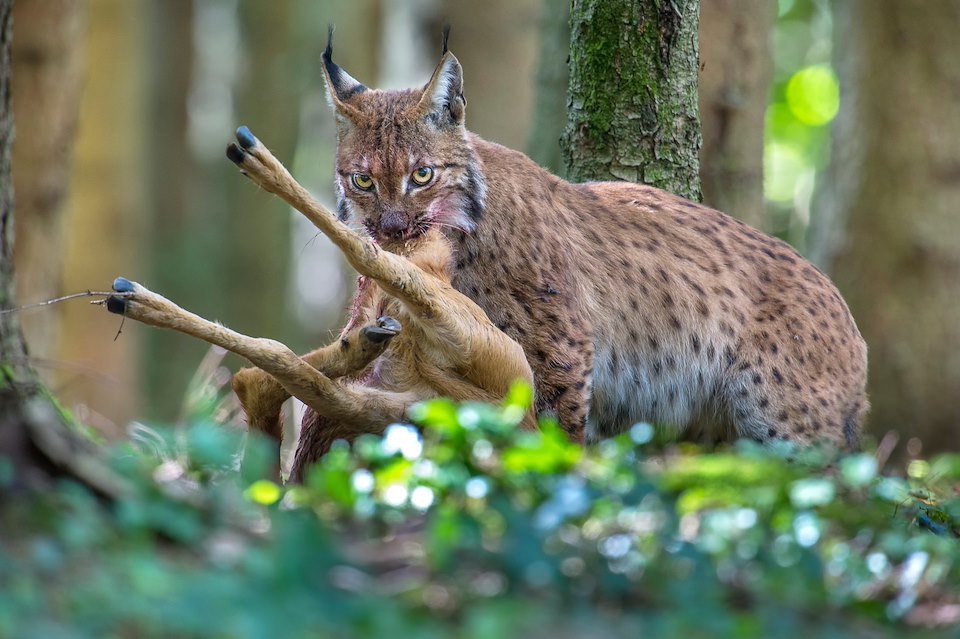
REWILDING STORIES
Informative and inspiring stories that catalyse Big Picture thinking.
Featured Story
Featured Story
What’s a sheep worth?
Words by Hugh Webster
Images by Mark Hamblin and Peter Cairns
Sheep have come to dominate the Scottish landscape, but at what cost? We could produce all the lamb we need while also supporting farmers to restore our lost biodiversity, but if farmers insist they cannot coexist with native species, it’s surely time to ask: what are sheep really worth, and do we need so many?
Part of our ‘The Big Picture in Focus’ series, providing a deep dive into the stories that impact Scotland’s road to nature recovery.
ReadDeer To Me
Words by Hugh Webster
Images by Mark Hamblin, Peter Cairns and Mat Larkin
As a deer stalker, Jack Ward’s job is to monitor deer populations and control their impacts. Deer management can be controversial but Jack loves his job, finding motivation for the early starts and daily discomfort in his understanding of the bigger picture. He sees deer management as necessary – for the recovery of the landscape and the health of the deer themselves.
ReadAspen: ticking the balance sheet box
Words by Hugh Webster
Images by Mark Hamblin and Peter Cairns
Aspen’s quaking, whispering leaves might capture our imagination and lift our spirits, but its commercial potential is part of a growing conversation around how we make the most of Scotland’s forests.
ReadLand Healers
Words by Hugh Webster
Images by Tierney Lloyd and Mark Hamblin
Feeling penned in by the frantic nature of life in the city, Andrew and Jess Spence moved north to Sutherland, where they’ve embarked on an ambitious rewilding journey that involves the whole family.
ReadWhen Rivers Run Free
Words by Aidan MacCormick
Illustration by Gemma Shooter
Images by Aidan MacCormick, Lee Collier and Peter Cairns
With many of Scotland’s rivers straightened, dredged and de-wooded, ecologist Aidan MacCormick immerses himself in a dynamic free-flowing river system to better understand how natural processes drive abundance and diversity in nature.
ReadRewilding by the people, for the people
Words by Hugh Webster
Images by Mark Hamblin, James Shooter, Peter Cairns and Tierney Lloyd
The Northwoods Rewilding Network supports more than 75 landholdings to commit to nature recovery, including those managed by communities. There are a growing number of Northwoods sites where rewilding is being led by local people, delivering nature-based jobs and improved health and wellbeing.
This is rewilding by the people, for the people.
ReadFriends with benefits?
Words by Hugh Webster
Images by SCOTLAND: The Big Picture
The synergy between beavers and aspen reminds us that nature recovery cannot be achieved one species at a time. We need to be willing to let nature lead, embracing the marvellous complexity that wildness generates.
ReadA Burning Question
Words by Hugh Webster
Images by Mark Hamblin and Tierney Lloyd
Muirburn – the controlled burning of vegetation for land management purposes – has been practiced for centuries, but as the Scottish Government reviews its policy on wildlife management and muirburn, is repeatedly burning our landscape really the best way to protect it?
ReadThe Lynx Binding Life And Death
Words by Hugh Webster
Illustrations by Richard Allen
Images by Laurent Geslin, Peter Cairns and Mark Hamblin
In the absence of apex predators in Scotland, key ecological interactions, such as carcass scavenging, are either absent or significantly suppressed. A steady supply of dead deer, partially eaten by lynx, would increase the year-round availability of carrion – a resource that, ironically, supports so much life.
ReadA Quaking Voice Sings In The Glens
Words by Andy Painting
Images by Mark Hamblin
The under-recognised, under-represented aspen is on the march at Mar Lodge in the Cairngorms, where landscape-scale nature recovery is giving this unique tree the chance to sing once again.
Read










